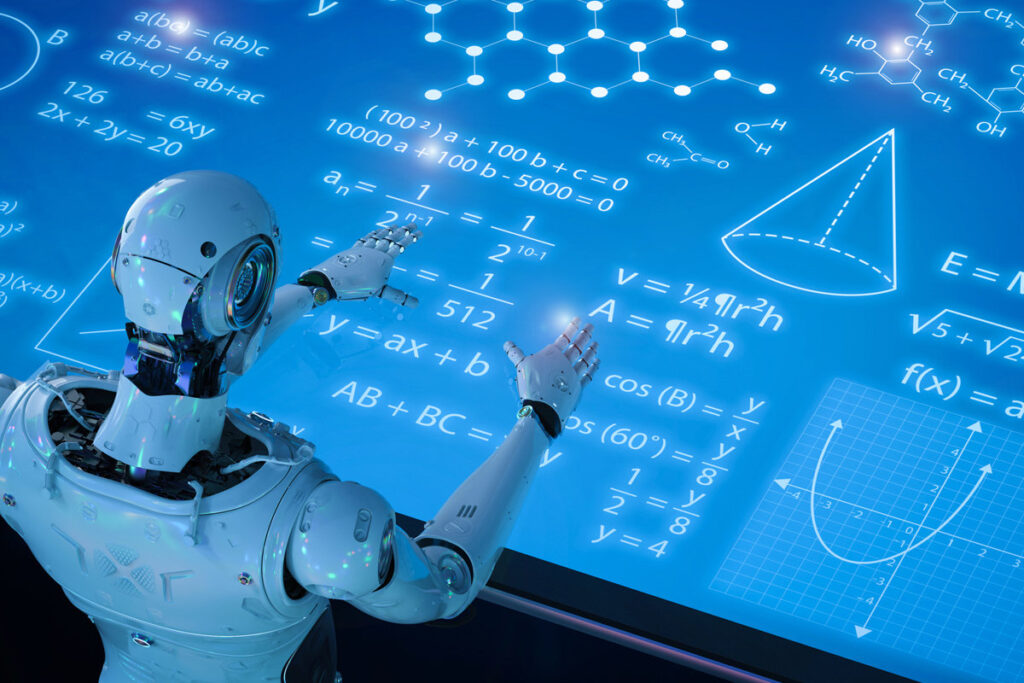Team of Researchers from MIT had created a machine-learning math solver that answers complex university-level maths problems in seconds just like a calculator.
Math and Physics has been the toughest area to study for students, as it twists your mind to test the computational ability, unlike other subjects which relies mostly on memory power. Not just for students, AI models too find it difficult to ace at the field, since questioning a math problem as text-form in a machine-understandable way seldom exists.
Though, a well-trained math-student may ease at deriving out differential calculus, integrals and algebra – the toughest math topics – in seconds, a computer-model fails to do, if you give it in a text-form, like in question-papers in exam.
However, a multidisciplinary team of researchers from MIT developed a machine learning model that solves university-level math problems in few seconds and also explains the solutions and generates set of math problems too on its own.
Machine Learning Math Problem-Solver
Researchers and faculty from MIT, Columbia University, Harvard University and University of Waterloo collaboratively have been working to create an algorithm for nearly years and they have neared the climax, as of now.
The machine learning model was eyed to pretrain the system to understand advanced mathematics questioned as texts and do appropriate computations for arriving at the answers, just like a high-school boy/girl doing math-exam. The pretrained models using ‘text’ form did only at 8% accuracy on high school math and so the team were committed to the work. Though graph neural networks ace at solving those, it would take a week to train them, the researchers say.
Idealizing out, the team molded the questions into programming tasks, where the algorithm is trained to convert texts as suitable keywords for a programming task. Thereby techniques like program synthesis, zero-shot learning and few-shot learning were applied.
In motive of achieving high accuracy, the programming tasks were fed to a neural network, that was ‘fine-tuned’ on code, besides pretrained on texts. The network was called ‘Codex’, produced by OpenAI. The fine-tuning process deceived the errors that hurdled the accuracy.
The pretrained model was introduced to millions of examples of code from online repositories to make it learn the relationships between texts and codes.
What the math-solver could do?
Normally, a typical math problem may require high computational power, to derive out in easy steps and involve concepts outside the field too, like the knowledge of deck of cards, dices, and so on. The pretrained and fine-tuned neural network were met out with all the contexts related to the solving-capacity. And the result is, the model from 8% accuracy surged to 80% accuracy.
The researchers also used their model to generate questions by giving the neural network a series of math problem on a topic and then asking it to create a new one.
Related Posts
“In some topics, it surprised us. For example, there were questions about quantum detection of horizontal and vertical lines, and it generated new questions about quantum detection of diagonal lines. So, it is not just generating new questions by replacing values and variables in the existing questions,” Iddo Drori says, a lecturer in the MIT Department of Electrical Engineering and Computer Science (EECS), who leads the team.
Will replace Human Professors?
Testing the machine generated questions to university students, they were unable to differentiate machine-generated and human-generated questions and reviewed that their level of difficulty and appropriateness were similar for both type of questions, meaning they could do equal computations as humans.
Drori, however, quickly points out that this work not intends to replace human professors, but as a pool of question providing platform for courses.
“Automation is now at 80 percent, but automation will never be 100 percent accurate. Every time you solve something, someone will come up with a harder question. But this work opens the field for people to start solving harder and harder questions with machine learning. We think it will have a great impact on higher education,” he says.
Cons
Currently, the model isn’t able to answer questions with a visual component and cannot solve problems that are computationally intractable due to computational complexity.
In addition to overcoming these hurdles, they are working to scale the model up to hundreds of courses. With those hundreds of courses, they will generate more data that can enhance automation and provide insights into course design and curricula.
Technology enhances the quality of education: Time has proved that!

